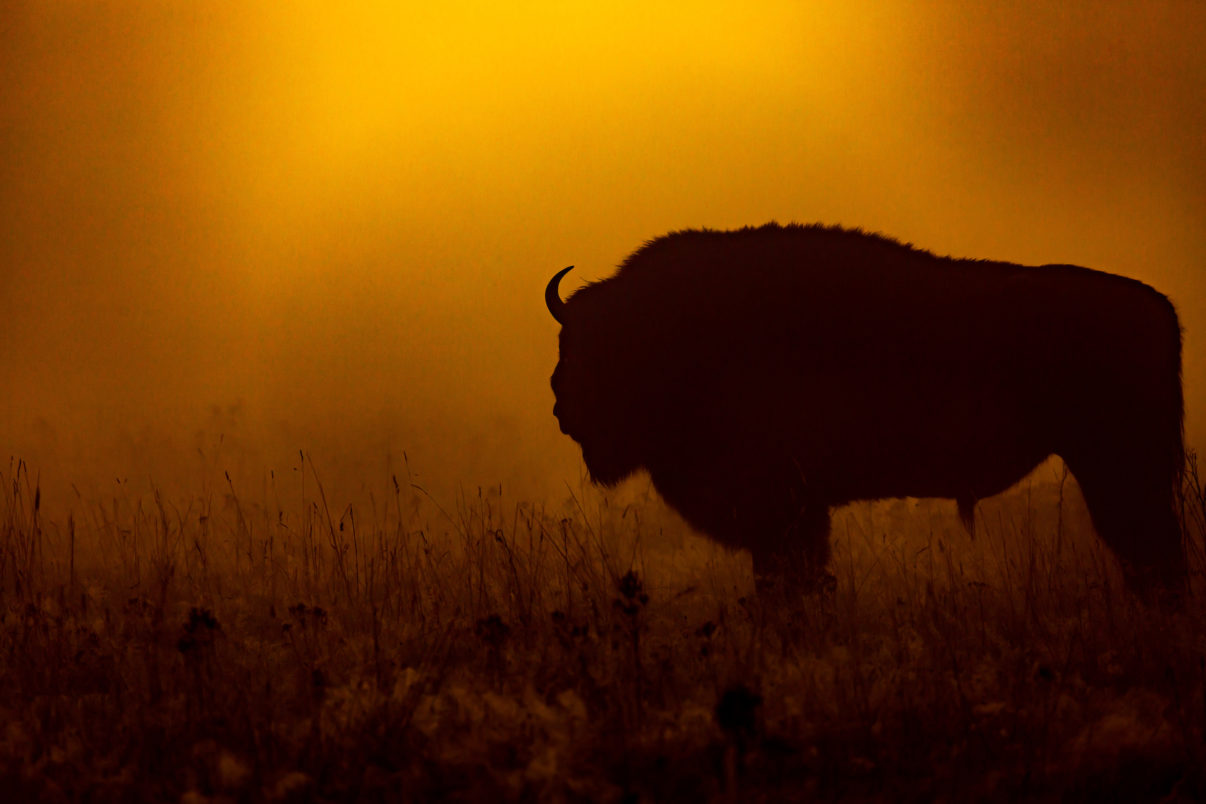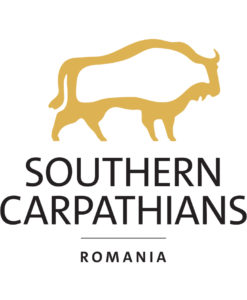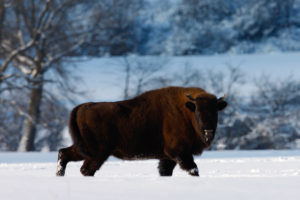In the Southern Carpathians rewilding area in Romania, community-focused measures are building positive relations between people and reintroduced bison.

Stories of recovery
 Supporting wildlife comeback is a pivotal part of our work at Rewilding Europe. It is therefore heartening to see populations of many European wildlife species – from the beaver and Alpine ibex to the brown bear and white-tailed eagle – stage a welcome recovery across Europe over the last four decades.
Supporting wildlife comeback is a pivotal part of our work at Rewilding Europe. It is therefore heartening to see populations of many European wildlife species – from the beaver and Alpine ibex to the brown bear and white-tailed eagle – stage a welcome recovery across Europe over the last four decades.
One of the most heartening wildlife recovery stories is that of the European bison. Once widespread across Europe, this magnificent animal was driven to the edge of extinction in the early twentieth century by hunting and habitat loss. When the last wild European bison was shot in the Caucasus in 1925, there were less than 60 individuals alive in zoo and private parks.
Record-breaking return

Building on a history of reintroductions in other countries, Rewilding Europe and WWF Romania have been working to reestablish free-roaming populations of European bison in the Southern Carpathians of Romania for the last six years.
Following annual releases near the village of Armeniș since 2014, 2018 saw another 23 bison released into the wild, including 14 animals at a second rewilding site in the Poiana Ruscă Mountains to the north. A further seven bison were released at the first release site in June 2019.
This ongoing and record-breaking reintroduction programme has thrown up certain unique challenges. The reintroduced bison have certainly touched many people’s lives, as was beautifully illustrated by the recently released short film Zimbrul by French videographer Emmanuel Rondeau.
But going beyond this, Rewilding Europe’s goal has alway been to use the presence of the animals as a way to develop the region, all the while maintaining a harmonious level of coexistence between bison and local residents.
Promoting coexistence

Apart from its important ecological role as a keystone species, Rewilding Europe believes that European bison can make a positive change for rural development in remote corners of Europe experiencing rural depopulation and land abandonment. In the Southern Carpathians, where the bison appears in many local myths and legends, the development model involves nature-based tourism, community-based and educational initiatives, scientific research and technological innovation.
One of the best ways to promote human-bison coexistence has been to ensure people benefit economically from the animals’ return. In 2018, 350 people took guided bison safaris in the Southern Carpathians rewilding area through the European Safari Company – a unique experience in Europe.
“Such tourism brings invaluable jobs and income to local people,” says Florin Hălăștăuan, a project officer attached to the Rewilding Southern Carpathians team. “The presence of the bison means the rewilding area is gradually becoming a destination. This is really important for the animals’ acceptance.”
Community outreach
Overseen by the Southern Carpathians rewilding team and WWF Romania, an ambitious education programme has also seen a growing number of young Romanians become involved with the wild nature on their doorstep. The programme, which has seen youth clubs known as “TANZ” created in a number of schools at both bison release sites, is helping to strengthen bonds with reintroduced bison populations.
Community outreach is also the responsibility of bison rangers. As members of the Southern Carpathians rewilding team, they not only monitor the bison, but also keep in regular touch with residents in both rewilding areas, addressing concerns and dealing with any potential issues in a proactive way. For example, they recently distributed a brochure and poster featuring information about the bison monitoring process and tips on bison safety.
A holistic process
Despite the challenges involved, we at Rewilding Europe believe that returning the European bison to the Southern Carpathians will not only act as a showcase for large-scale landscape restoration, but generate significant long-term benefits for local communities and beyond.
And it is not only improved legislation that will help reintroduced bison herds to reestablish themselves. As in other rewilding areas, the continuation of community outreach, educational programmes and wildlife tourism development are all essential to promote coexistence and create the right environment for the animals to flourish.
Want to know more?
Much of this article was taken from a longer story entitled “Carpathian Coexistence”, which featured in Rewilding Europe’s Annual Review 2018. We invite you to view this beautiful 88-page publication, which contains a wide range of insightful feature stories, stunning photography and illustrative infographics, showcasing the progress made in our own rewilding areas and the growth of Europe’s rewilding movement in 2018.
Order your hard copy
You can order your own hard copy of the Rewilding Europe Annual Review 2018. It is for free, except shipping costs.
